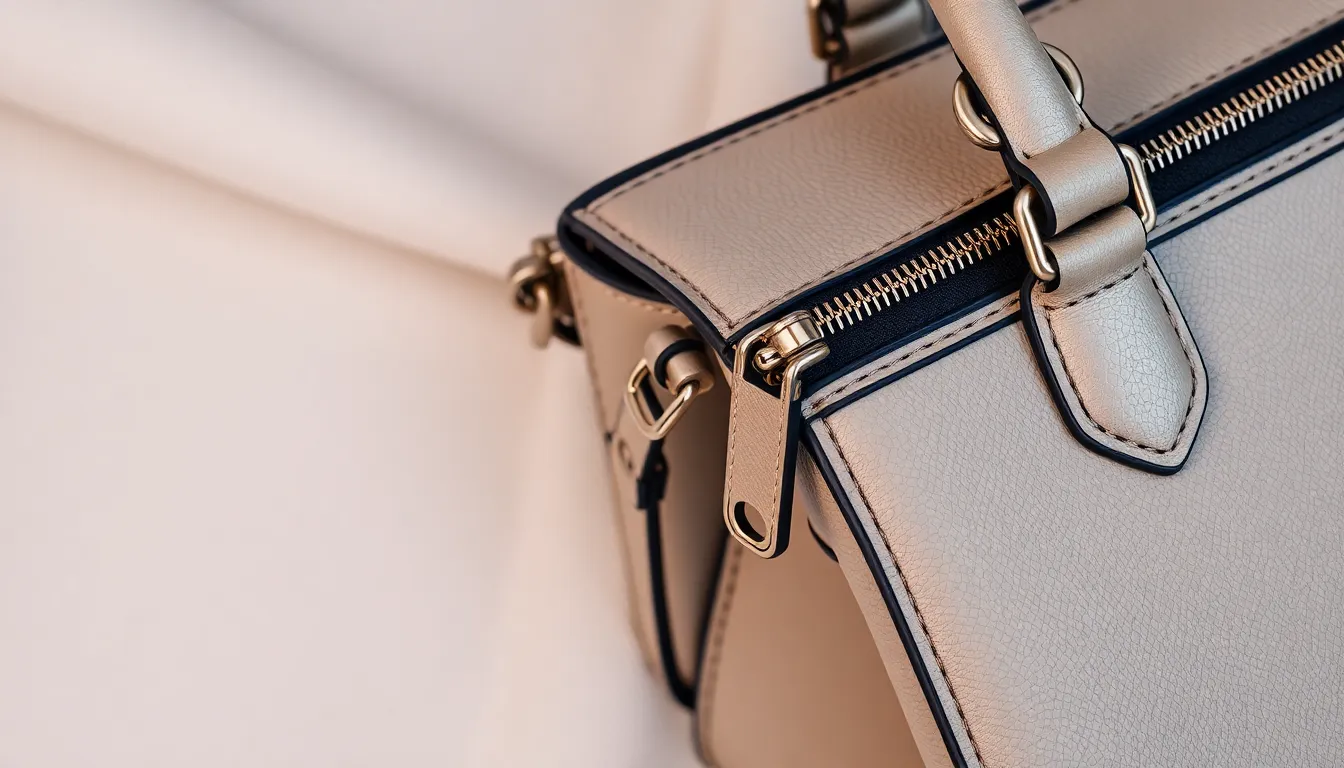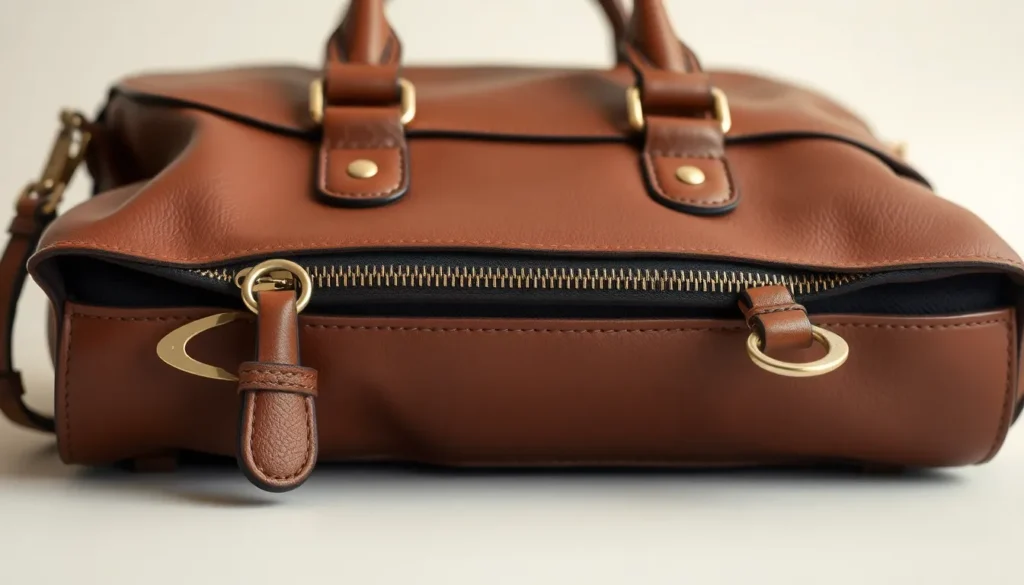Table of Contents
ToggleWhen it comes to handbags, it’s not just about the fabric or the design; the hardware plays a starring role too. Think of those shiny zippers, chic clasps, and sturdy rings as the unsung heroes of style. They’re the supporting cast that can make or break a bag’s look, and let’s be honest, nobody wants a handbag that looks like it’s been through a wrestling match with a raccoon.
Understanding Handbag Hardware
Handbag hardware encompasses various components that enhance functionality and style. Zippers, clasps, and rings play a significant role in defining a handbag’s overall aesthetic.
Types of Handbag Hardware
Different types of handbag hardware include closures, straps, and embellishments. Closures, such as zippers or magnetic clasps, secure the contents effectively. Straps, either detachable or adjustable, provide versatility in carrying options. Embellishments like decorative studs or chains add flair to the design. Each type contributes to both functionality and appeal.
Materials Used in Handbag Hardware
Materials for handbag hardware typically consist of metal, plastic, and leather. Metal hardware, including brass and stainless steel, offers durability and an elegant finish. Plastic options are lightweight and can be colorful, suitable for casual designs. Leather hardware, often used for straps or accents, adds a touch of luxury. Each material offers distinct qualities contributing to the handbag’s overall look and functionality.
Importance of Quality Handbag Hardware

Quality handbag hardware plays a crucial role in both the functionality and appearance of a bag. Durable components can significantly extend the life of a handbag and enhance its overall value.
Durability and Functionality
Durable hardware withstands daily wear and tear, ensuring longevity. Zippers and clasps crafted from high-quality materials prevent breakage, offering reliability during use. Straps made from sturdy components contribute to carrying comfort and support. Moreover, functional hardware elements can ease access to the bag’s contents, improving user experience. Choosing well-made pieces enables bags to endure various conditions, from daily commutes to special occasions.
Aesthetic Appeal
Aesthetic appeal derives largely from the choice of hardware materials and finishes. Quality metal accents can add a touch of sophistication, enhancing a handbag’s overall design. Unique closures and decorative embellishments can set a bag apart from others on the market. Choosing hardware in complementary colors or patterns creates visual harmony throughout the handbag. Thoughtful design elements, such as stylish rings or buckles, elevate the bag’s allure, making it a desirable fashion accessory.
Choosing the Right Handbag Hardware
Choosing the right handbag hardware involves understanding both functionality and aesthetic appeal. Selecting quality components enhances a handbag’s overall value and longevity.
Factors to Consider
Durability is key when choosing hardware. High-quality metals resist wear and tear while providing a refined look. Resistance to rust and corrosion enhances the lifespan of zippers and clasps. Compatibility with the bag type also matters; larger bags need robust hardware to support weight. Consider weight as well—lightweight materials make the bag easier to carry. Finally, keep in mind the finish. A polished or matte finish can alter the handbag’s overall appeal.
Matching Hardware with Bag Design
Matching hardware to bag design creates a cohesive look. Think about the bag’s style; classic designs pair well with traditional metal finishes, while modern styles benefit from unique materials like acrylic. Color coordination adds another layer of sophistication. For instance, a black handbag with gold hardware creates a striking contrast. Additionally, complementing strap styles ensures harmony; a chain strap works well with both casual and elegant designs. Selecting appropriate hardware influences visual balance, making the handbag a fashionable statement piece.
Maintenance of Handbag Hardware
Proper care keeps handbag hardware in optimal condition, ensuring longevity and functionality. Regular maintenance practices can help prevent deterioration and maintain aesthetic appeal.
Cleaning Tips
Cleaning handbag hardware regularly protects its finish and prevents corrosion. Use a soft cloth dampened with water to wipe down metal parts. For stubborn grime, a mixture of mild soap and water effectively removes dirt without causing damage. After cleaning, dry the hardware completely to avoid moisture accumulation. Plastic components require gentle cleaning with a soft, dry cloth to maintain their shine. Avoid harsh chemicals and abrasive materials that could scratch surfaces.
Repair and Replacement
Repairing handbag hardware can extend its life, making it a cost-effective option. Small issues, like loose screws or damaged clasps, often get fixed at home with basic tools. If a zipper malfunctions, replacing it is usually straightforward. Choose compatible hardware to ensure proper fit and function. In cases where damage is extensive, consider professional repair services for intricate pieces. Engaging a skilled artisan guarantees a quality restoration that maintains the handbag’s overall integrity and appearance.
Handbag hardware plays a pivotal role in defining both functionality and style. By selecting high-quality materials and thoughtful designs, one can enhance the overall appeal of any handbag. Durable components not only ensure longevity but also contribute to the bag’s value and usability.
Regular maintenance is crucial for preserving the beauty and functionality of hardware elements. With proper care, handbag hardware can remain striking and reliable for years to come. Ultimately, the right hardware choices can transform a simple handbag into a fashion statement, making it an essential consideration for any handbag enthusiast.




